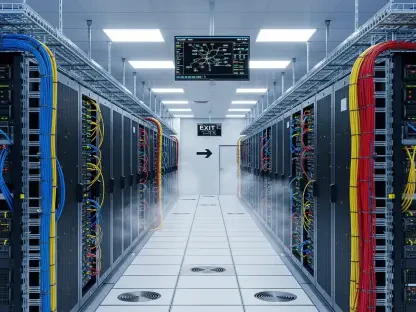The cybersecurity landscape for Managed Service Providers (MSPs) is rapidly evolving, bringing both challenges and opportunities within the realm of digital defense. Recent data reveals that a vast number of MSPs have encountered multiple security breaches over the past year, yet a striking majority express significant confidence in their existing security measures. However, this confidence does not always translate into full preparedness, particularly with new and complex regulations on the horizon. Understanding the trends and readiness in cybersecurity is crucial for MSPs vying to protect their clients effectively while navigating the intricacies of compliance.
Current State of Cybersecurity Preparedness Among MSPs
Data Insights and Adoption Trends
The CyberSmart MSP Survey offers crucial insights into the current state of cybersecurity preparedness among MSPs. Despite 69% of MSPs experiencing multiple security breaches in the past year—with nearly half facing three or more attacks—a strong sense of confidence persists, with 76% rating their confidence levels as complete or above average. Although nearly all MSPs consider themselves at least averagely confident, only 20% express full confidence in their cybersecurity posture, signaling room for growth.
These data points signal a reassuring level of self-belief among MSPs, yet they highlight the gap between confidence and actual cybersecurity readiness. As threats become more sophisticated, MSPs are actively adopting improved cybersecurity measures. Unfortunately, a mere 39% feel equipped to assist businesses in navigating new regulations like NIS2, DORA, and the EU AI Act. This underscores the urgent need for adaptive strategies and continuous improvement to bridge the confidence-readiness gap.
Real-world Applications and Case Studies
Case studies of MSPs handling cybersecurity threats effectively paint a vivid picture of success through innovation and resilience. Some have embraced cutting-edge technologies and proactive monitoring to strengthen their cybersecurity frameworks, demonstrating the advantages of adopting dynamic and forward-thinking approaches. By proactively addressing vulnerabilities and applying novel solutions, these providers serve as exemplars for others aiming to safeguard their digital environments more robustly.
Specific instances highlight MSPs that have not only upgraded technical infrastructures but also fostered a culture of cybersecurity awareness through comprehensive training and education. Their commitment to staying ahead of potential threats by leveraging advanced security protocols and collaborative tools underscores the potential for success when preparation meets opportunity.
Expert Opinions and Insights
Industry experts are keenly attuned to the barriers that inhibit MSPs from achieving optimal cybersecurity preparedness. Thought leaders underscore the need for a multi-faceted approach that involves both technological enhancements and strategic partnerships, emphasizing the potential risks of becoming complacent in a fast-evolving threat landscape. The shared insights stress that while confident, MSPs must not become static, as a stagnant approach can quickly become obsolete in the face of emerging cyber threats.
Challenges such as skill shortages, rapidly changing technology, and budget constraints are frequently cited as obstacles for MSPs striving for better cybersecurity. Recommendations from professionals include focused investment in training programs, adopting flexible cybersecurity frameworks, and fostering collaborations within industry networks. These pathways not only enhance readiness but also provide the assurance needed to instill trust with client partners.
Future Outlook for Cybersecurity in MSPs
The trajectory of cybersecurity for MSPs involves navigating increasingly stringent compliance and regulatory landscapes. As governance frameworks evolve, MSPs will likely witness significant shifts in practice and requirements, necessitating swift adaptation. With anticipated updates in laws like NIS2 and the EU AI Act, MSPs have the chance to transform regulatory challenges into opportunities by developing enhanced services tailored for compliance.
Emerging threats also bring opportunities for MSPs to innovate and remodel their approaches to cybersecurity. Technologies such as artificial intelligence and machine learning will play a vital role in detecting and responding to threats in real-time, lending an edge to those who prioritize cutting-edge capabilities. Preparedness will hinge on the degree to which MSPs can harness these technologies while adjusting service models to address client-specific vulnerabilities effectively.
Conclusion and Call to Action
Reflecting on this analysis, it becomes evident that while MSPs exhibit commendable levels of confidence, there remains a vital need for continuous vigilance and adaptation. The gap between perceived readiness and actual preparedness highlights the importance of comprehensive strategies that align with evolving cybersecurity demands. Looking ahead, MSPs have the chance to play a pivotal role in shaping robust defense mechanisms through proactive measures and strategic partnerships.
The potential for MSPs to remain at the forefront of cybersecurity resilience is vast, provided they invest in ongoing education and adjust to emerging trends. By focusing on customizable solutions, leveraging advanced technologies, and fostering industry collaboration, MSPs can ensure they are well-placed to defend against future cyber threats. As the digital landscape continually evolves, the onus is on MSPs to transcend confidence and build resilient systems that anticipate and counteract the challenges of tomorrow.









